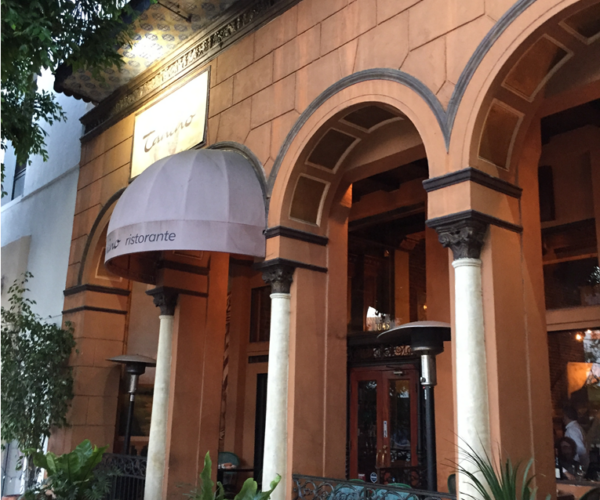
Place
3901 San Fernando Road (Demolished)
A rare example of Mediterranean revival commercial architecture on Glendale's San Fernando Road
Lost
In 2013, the Glendale City Council approved the demolition of this historic building for a new mixed-use development.


Place Details
Address
Year
Style
Decade
Property Type
Community

Adrian Scott Fine/ L.A. Conservancy
Overview
3901 San Fernando was an excellent and rare example of a commercial Mediterranean Revival style building commissioned by prominent Glendale developer Lloyd Harmond Wilson in 1930.
In 2013, a mixed-use development called the Glendale Link Project was proposed for the site. The Final Environmental Impact Report (FEIR) declared that 3901 San Fernando was not a historic building, meaning the proposed project would not have an adverse impact on historic or cultural resources.
The LA Conservancy, in partnership with The Glendale Historical Society (TGHS), pressed developers and the City to recognize the building at 3901 San Fernando Road as a historic resource and find alternatives that would retain the building and support infill development.
About This Place
About This Place
In a 1995 survey for the City of Glendale’s San Fernando Road Corridor Redevelopment Project, the building was identified as “the only example of a Moorish Revival-style commercial building extant within the San Fernando Road project area.” It was determined eligible for listing in the California and National register.
The building’s developer Lloyd Harmond was instrumental in the early development of the San Fernando Road corridor. Locally known as the “progressive realtor whose magic wand” dramatically increased real estate values, he personally brokered many of the deals that ultimately shaped the character of early Glendale.
Our Position
The Conservancy opposed the Environmental Impact Report findings that disregarded expert opinion that 3901 San Fernando was a historic building and incorrectly stated the proposed project would not significant impact on a historic and cultural resource.
The Conservancy advocated for the project developers to adaptively reuse the building and add density with sensitively-designed infill construction.
In our testimony before the City Council, we stressed the following issues and flaws with the FEIR:
1) The EIR fails to acknowledge there is a historic resource involved and instead relies on flawed analysis and an expert opinion that lacks a factual basis. It draws conclusions and dismisses the building and its potential significance. The Conservancy believes there is substantial evidence provided within the record that otherwise would support an alternative conclusion, one that clearly demonstrates the building at 3901 San Fernando Road meets the minimum threshold for the California Environmental Quality Act CEQA and consideration as an historical resource.
2) The EIR fails to acknowledge and incorrectly states the proposed project will not have a significant impact on a historic and cultural resource. The Conservancy disagrees as there is a known historic resource involved, whereas a significant impact that will occur due to demolition. Further, the EIR fails to acknowledge or assess visual impacts as required through CEQA.
3) There has not been a good faith consideration of at least one bona fide preservation alternative. What was evaluated in the EIR is not an “apples-to-apple”s comparison or adequate, as it is designed and intended to fail in terms of meeting the project’s objectives.


